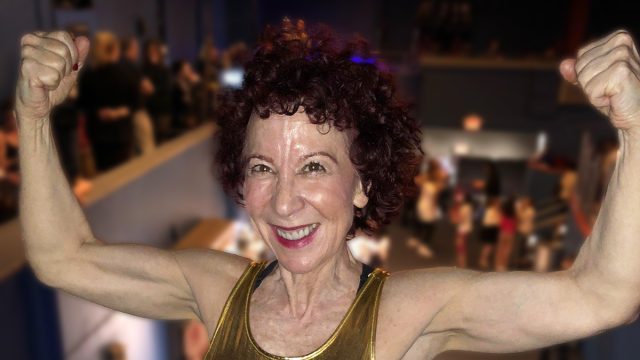75-Year-Old Bodybuilder Shares Workout Secrets: "Age Is Just an Excuse"

Most of us have caught ourselves making excuses about getting fit or staying active – whether it's being too busy, too tired, or thinking we're too old to start. But what if age and life's challenges could actually become stepping stones to your strongest self?
Meet Marilynn Larkin, a 75-year-old personal trainer who's redefining what's possible in fitness. As the founder of GET UNBENT and a champion bodybuilder managing stage 4 cancer, Larkin isn't just talking about fitness – she's living proof that it's never too late to transform your life. Through her work as a posture expert, certified personal trainer, coach, and health writer, she's helped countless people discover their own strength, regardless of age or circumstances.
Whether you're 25 or 75, Larkin's practical wisdom and proven strategies will help you build a stronger, more resilient body and mindset. Read on to discover the secrets that have kept her in the best shape of her life – and learn how you can apply them to your own fitness journey.
Facing Cancer with Courage
Before becoming a certified trainer, Larkin established herself as a health writer for prestigious publications including Vogue, The Lancet, and Reuters Health. Her transformation from writer to warrior began in 2003 when, at age 54, she entered her first bodybuilding competition and placed in both Masters and Open divisions.
"I focus on maintaining strong, flexible back muscles and stretching my body lengthwise," Larkin explains, sharing one of her fundamental training principles. She emphasizes the importance of starting each day with targeted stretching exercises to maintain proper posture and flexibility.
When faced with a stage 4 cancer diagnosis in 2023, Larkin maintained her commitment to fitness despite significant challenges. "If you loved what you were doing before you received a diagnosis, keep going!" she encourages. "Continue as best you can to do all the things you enjoy – in many cases, you will still be capable of doing so, even if you may need to modify certain things."
Daily Dedication
Her daily routine demonstrates this dedication. "I keep a regular routine every day of the week, including weekends," she shares. "I get out of bed at 5:30 am and do various chores, followed by exercises to wake up my muscles." Her schedule includes three personal training sessions weekly, plus spin and dance classes, alongside her professional work.
Regarding exercise selection, Larkin emphasizes personalization over age-based limitations. "I believe that the shape you are in and your fitness goals, not chronological age, determine which exercises are best for you," she states. However, she strongly advocates for resistance training to combat age-related muscle loss.
For those facing health challenges, Larkin offers wisdom from her own experience: "Accept that you have cancer rather than trying to 'battle' it. If you're stage 4, like I am, it's part of your body now and often can be held in check even though you can't get rid of it completely."
Core Components of Success
Her approach to fitness includes several key components:
Core Activation: She recommends beginning with rotational movements while keeping the hips and feet forward, followed by balance exercises.
Leg Strengthening: "Make sure you feel with each squat that you are sitting back into your hips, not pushing forward into your knees," she advises.
Proper Nutrition: Larkin follows a Mediterranean-style diet and emphasizes the importance of adequate protein intake for older adults.
Continuous Challenge: "In terms of fitness, challenge yourself!" she encourages. "Try to work your way back up to where you were before the diagnosis, and consider a bodybuilding or fitness challenge, like I did."
Inspiring the Next Generation
Through her work, Larkin continues to inspire others with her message that the human body is capable of extraordinary achievements at any age. Her journey exemplifies how determination, proper training, and a positive mindset can help overcome even the most challenging circumstances.
And if you enjoyed this article, don't miss I Hit 60 and These 15 Anti-Aging Foods Keep Me Fit and Feeling 20 Years Younger.




